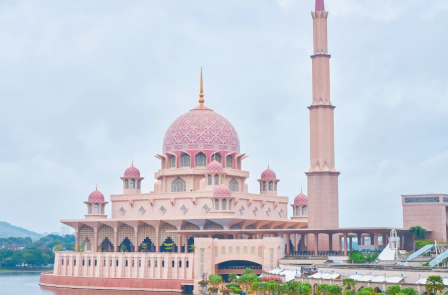 Export News
Export News
 10-07-2023
10-07-2023
Exporters in Pakistan play a vital role in driving economic growth and contributing to international trade. However, they often face trade barriers and restrictions that can impede their export activities. In this article, we will explore the trade barriers and restrictions that exporters in Pakistan encounter. Understanding these challenges is crucial for exporters to develop strategies, seek appropriate support, and navigate the global trade landscape effectively.

1. Overview of Pakistan's Export Landscape:
Before delving into trade barriers, let's examine the current state of exports from Pakistan:
1.1 Diverse Export Sectors:
Pakistan boasts a diverse range of export sectors, including textiles, agriculture, pharmaceuticals, sports goods, and more. These sectors contribute significantly to the country's export revenues and provide employment opportunities.
1.2 Market Destinations:
Pakistan's exporters cater to various global market destinations. Key markets include the United States, China, the United Kingdom, Germany, and the United Arab Emirates. Understanding market dynamics and specific trade regulations in these destinations is crucial for exporters.
2. Tariffs and Customs Duties:
Tariffs and customs duties can pose significant challenges for exporters. Consider the following aspects:
2.1 Import Tariffs:
Importing countries may impose tariffs on certain goods, making them more expensive for foreign buyers. Exporters in Pakistan encounter these tariffs, which can affect price competitiveness and profitability. Being aware of tariff rates and negotiating preferential trade agreements can help exporters mitigate the impact.
2.2 Non-Tariff Barriers:
Non-tariff barriers, such as quotas, import licenses, and technical regulations, can restrict market access for exporters. Compliance with product standards, obtaining necessary certifications, and understanding import regulations are critical for exporters to overcome non-tariff barriers.
3. Trade Documentation and Procedures:
Exporters in Pakistan must navigate complex trade documentation and procedures. Consider the following aspects:
3.1 Customs Documentation:
Completing accurate customs documentation is essential for smooth export operations. Exporters must ensure compliance with customs requirements, provide necessary certificates of origin, and fulfill documentation related to product quality, safety, and labeling.
3.2 Export Licensing:
Certain products require export licenses to ensure compliance with export control regulations. Exporters must navigate the licensing process, understand the specific requirements, and obtain the necessary permits to avoid delays or penalties.
4. Intellectual Property Rights (IPR) Protection:
Intellectual property rights protection is a crucial aspect of international trade. Exporters in Pakistan may encounter challenges related to counterfeit products, copyright infringement, or patent violations. Protecting intellectual property through registrations, patents, trademarks, and copyrights is essential to safeguarding the interests of exporters.
5. Sanitary and Phytosanitary (SPS) Measures:
Sanitary and phytosanitary measures are put in place to protect human, animal, and plant health. Compliance with SPS measures is crucial for exporters in sectors such as agriculture and food products. Adhering to regulations, conducting proper inspections, and maintaining quality control systems are vital for meeting SPS requirements.
6. Currency Fluctuations and Exchange Controls:
Exporters in Pakistan may face challenges due to currency fluctuations and exchange controls. Fluctuations in exchange rates can impact export pricing, profitability, and competitiveness. Exporters should carefully monitor exchange rates, consider hedging strategies, and explore currency risk management options.
7. Market Access and Competitiveness:
Exporters in Pakistan may encounter market access barriers and intense global competition. Consider the following aspects:
7.1 Preferential Trade Agreements:
Preferential trade agreements provide opportunities for exporters to gain tariff advantages in specific markets. Understanding and utilizing preferential trade agreements can enhance market access and competitiveness for Pakistani exporters.
7.2 Product Differentiation and Value Addition:
Exporters can differentiate their products through quality, design, innovation, or value-added services. Adding value to products and highlighting unique selling points can help exporters overcome competition and gain a competitive edge in the global market.
7.3 Market Diversification:
Diversifying export markets is a strategy to mitigate the impact of trade barriers. Exploring emerging markets, identifying niche segments, and adapting products to specific market requirements can reduce dependence on a single market and enhance overall competitiveness.
Conclusion:
Exporters in Pakistan face various trade barriers and restrictions that can impede their export activities. Tariffs, customs procedures, intellectual property rights protection, sanitary and phytosanitary measures, currency fluctuations, and intense global competition pose challenges. However, exporters can overcome these barriers through strategic planning, compliance with regulations, market diversification, and leveraging preferential trade agreements. Collaboration with trade promotion organizations, government support, and continuous monitoring of market trends are essential for exporters to navigate the global trade landscape successfully.
Category
Leave Message for Demo Request or Questions


 T-info
T-info T-discovery
T-discovery

 My
Tendata
My
Tendata Market Analysis
Market Analysis Customer
Development
Customer
Development Competitor
Monitoring
Competitor
Monitoring Customer Relationship
Customer Relationship





































































































































